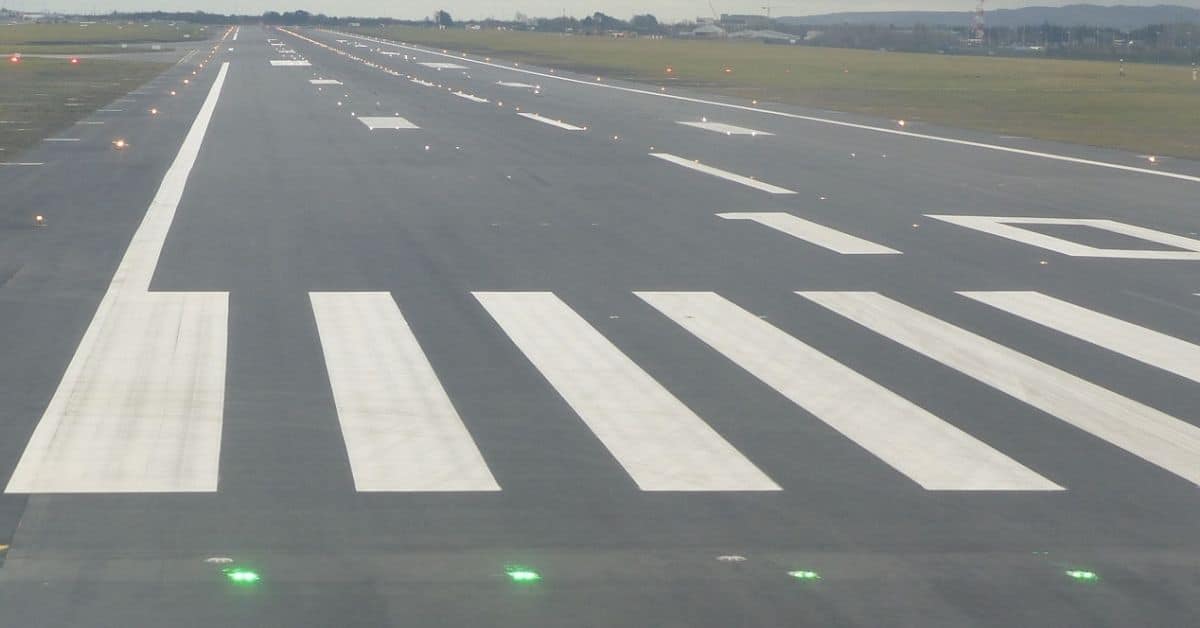At major commercial airports around the world, it is not uncommon for there to be more than one runway in use at a given time. Airport infrastructure such as airport terminals, taxiways, and runways are the key factors for controlling the flow of passengers through the airport. As a result, there are multiple reasons behind an airport having more than one runway in service.
Capacity
At airports that are at high capacity, in which millions of passengers pass through each year, there are exponential increases in the frequency of flights in and out of the airport. This increase in daily flights means more capacity for arriving and departing aircraft is required. As a single runway is limited to a specific number of arrivals and departures with adequate spacing required between flights, a second runway is often required to alleviate the traffic flow on the existing runway.
A prime example of this scenario is London Heathrow Airport, UK. The airport currently has 2 active runways; 27L/09R and 27R/09L. Due to the continued demand for expansion at the airport, a third runway has been proposed for several years. This would allow for the airport to cater to more than 100 million passengers a year.
The construction of additional runways can help to reduce on-ground delays incurred by aircraft. On-ground congestion means aircraft experience prolonged waiting times for departure and arrival. These delays can be expensive for the airlines due to increased fuel burn, unsatisfied passengers, and overall disruption to the scheduling of aircraft.
Extra runways can help to ease this congestion by dispersing traffic flow across multiple runways rather than just on single runway operations. At busy international airports such as San Francisco International, it is common practice for different runways to be allocated specific roles; one for departing aircraft and one for arriving aircraft for example.
This reduces backlog along the adjacent taxiways to the runways.
Prevailing Winds
The weather conditions, in particular the wind direction, directly impacts which runway is used at an airport for arrivals and departures. Aircraft typically take off and land into the wind. The windsock located alongside the runway is often used in these circumstances to determine the correct active runway.
In some weather scenarios, aircraft will make crosswind landings and takeoffs. In these conditions, alternative runways may be allocated for this configuration. This may be due to the runways usually allocated being unsuitable for the specific wind conditions faced.
The wind element is integral in runway selection due to aircraft requiring sufficient and safe distances for departure and arrival.
Backup
On occasions, there are incidents that require a runway to be temporarily closed to assess a situation (aircraft incident, FOD on the runway, etc). These delays can be lengthy and cause a delay to departures and arrivals.
A secondary, backup runway will assist in reducing the delays. Operations may switch to this second runway in the event that the primary active runway requires inspection. This is also true for instances in which a runway requires to be closed for significant periods of time – generally for maintenance such as runway resurfacing, runway light maintenance, or for general repairs.
Aircraft Traffic Spacing
At busy international airports, ATC will monitor and regulate the spacing between aircraft arriving and departing. A time interval between aircraft movements of 60-90 seconds is commonly applied at busy airports.
These time intervals can vary however due to the need to factor into account wake turbulence effects. Wake turbulence occurs when large aircraft leave a footprint of such in the air, in which if a smaller aircraft was to fly behind, it could incur a significant amount of upset turbulence.
In severe cases, this wake turbulence could have catastrophic impacts on the following aircraft.
Different Activities
At mixed-use airports, it is not uncommon to find a composition of commercial, military, or general aviation activity. As a result, there may be separate runways designated for these respective groups. For example, a smaller, grass runway at the airport would be assigned for light general aviation aircraft while a long, asphalt runway would be used by large commercial aircraft and/or military use.
These types of operations make the most sense for maximizing the movement frequency at mixed-use airports. Referring back to traffic spacing, there may be a significant increase in the interval time for light aircraft departing after large commercial airliners due to concerns for wake turbulence.
Local Planning Restrictions
At airports located within densely populated areas, there are often restrictions imposed by local councils in which for a portion of each day, aircraft are not permitted to land or take off over a specific area. As a result of this, airports may construct runways that do not involve traffic flying over densely populated areas. This enables more flexibility in terms of the percentage of the day that aircraft can land or take off.
Why do Some Airports have 2 or More Runways?
As the above factors have illustrated, there are a number of reasons in which multiple runways are required at airports. The need for which will depend on a number of operational factors such as:
- PAX (Passengers) numbers
- Type of Aircraft using the airport
- Prevailing wind conditions
- Breakdown of aviation activities: passenger, general aviation, military, etc..
- Local planning restrictions
Read More:
Why Are Airport Runways So Expensive?
The Costs of Building a Runway
This is an updated article. Originally posted on January 11, 2022 @ 3:30 pm

After visiting more than 60 countries, I have probably been on every type of plane there is and visited countless airports. I did my very first international solo trip to South Africa at the age of only 16 and haven’t really stopped traveling since.
Despite the adventurous travel itch, I do have a nerdy side as well – which is satisfied by writing about all things aviation “too boring” for my regular travel blog.
